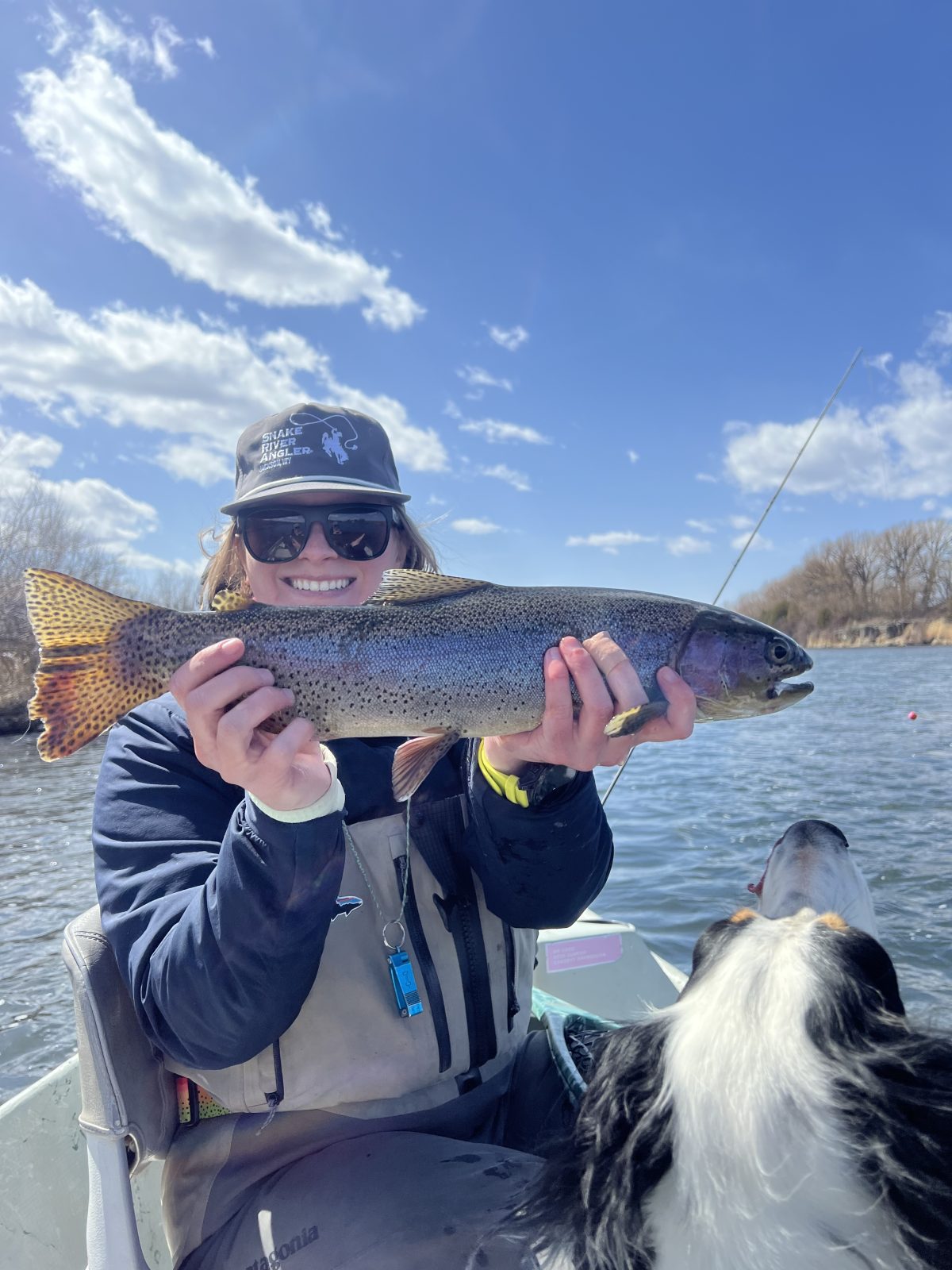
Snake River
Warming temps have been the norm over the past week and a half but this has not put the Snake in runoff yet, but we should see it by the end of the month. Expect some of the lower tributaries to come in off-color, but not necessarily to call the main river dirty a mile of so below where the confluences. So get out and hit it while you can. A decent smattering of midges and BWOs (even on sunny days) is occurring each day. Capnia stoneflies are out and the larger subspecies are making their first appearance of the year. We are also starting to see a couple o’ skwalas here and there along with micro caddis later in the afternoon. Surface feeding starts around 12:30pm and continues until after 4pm, with the exception of moderately sized attractors which can get eats as early as 11am (nothing off the charts, but certainly good enough to make things interesting). Riffles, troughs, and seams are the prime water types to focus on.
Production on streamers is picking up a tick or two with each passing day. Slower currents are key in the morning and remain so throughout the day. Faster currents are active starting around 2pm. Moderately sized patterns – Sparkle Yummies, Lil’ Kims, etc – are clearly outperforming larger streamers most days. Go with floating lines or sinking tips in the INT to 3ips range and slow to moderate retrieves. Hesitations in line strips during the morning hours can be very beneficial.
South Park
Flows on the South Fork have been ramping up and currently stand at approximately 6,000cfs. The entire river is fishing in decent early spring form. With flows up, the lower reaches from Wolf Eddy down to Lorenzo are taking the cake in a noticeable way. As on the Snake, midges and BWOs are out in good numbers most days and caddis are becoming a bit more prominent. Consistent surface action can start as early as noon, but the sweet spot really starts around 1pm and continues until 5pm or so. With flows ramping up and fish being displaced from a good part of the time, it can be more productive to go with double or triple nymph rigs and fish deeper lies in eddies, seam margins, and riffle pools. Adjust your depths accordingly, but focus on the lower 1/3rd of the water column.
Streamers are working well on all reaches with slower water types being key on the upper reaches and both faster and slower currents key on the lower reaches. Target sloughs and backwater side channels for the most consistent action with flows increasing. Both moderately sized and larger patterns are working equally well. Floating lines and INT tips are producing best. If fishing during a ramp up in flows, using sinking tips in the 6ips to 8ips range are working well in deeper pools with slow currents. Slow retrieves is the best way to go.
Henry’s Fork
The Henry’s Fork is a good place to be at the moment on just about every reach that is open. The upper river has been solid in the afternoon and the lower reaches have been fishing solid throughout the day. Caddis emergences are what’s to be expected for this time of year and they are emerging a bit more consistently as we get deeper into April. Midges and BWOs are still around in decent to good numbers. As has been the case over the past month, key waters to target with both surface patterns and nymphs include seams, riffle pools (especially those with higher gradient drop-offs, and submerged structure and banks with slow to moderate currents. Streamers are worth employing as well especially on the lower reaches. There are a decent amount of days when they are outperforming dries and nymphs in not only size but numbers as well (if you stay focused and target the right water). The most consistent production has been primarily from around 10:30am until 3pm, with post-sweet spot have more eats and hookups than pre-sweet spot. Go with small and moderately sized patterns and target banks, structure, seams, and eddy current margins. Faster currents are producing almost as well as slower currents on the lower river.